Sham: New York Times hits new low with discredited ‘Hamas mass rape’ story
By Press TV Staff Writer
In a front-page article published on December 28, less than three months into the Israeli war on Gaza, the New York Times accused the Hamas resistance group of “weaponizing” sexual violence on October 7.
The exhaustive report, which was within no time reproduced by many media outlets worldwide, said the Gaza-based resistance group used rape against Israeli settlers, citing shadowy “witnesses.”
It generated palpable buzz on social media and intelligentsia circles, prompting many to denigrate the Palestinian resistance movement and the ‘Al-Aqsa Storm Operation’ (also known as the Al-Aqsa Flood).
However, as the pieces of the puzzle fell into place, the allegation of “a broader pattern of gender-based violence on Oct. 7” by Hamas, as reported by the leading American daily, turned out to be a hoax.
Soon, many journalists affiliated with the newspaper resigned or distanced themselves from the paper’s Gaza policy. According to reports, it divided the New York Times newsroom.
An investigation by the US-based The Intercept website revealed glaring discrepancies, with the spokesperson for Kibbutz Be’eri, identified as the location of the alleged Hamas attack, stating that the individuals the NYT claimed were "victims of sexual violence" admitted that it was not true.
The family of “the girl in the black dress”, as cited in the NYT story, also acknowledged its hollowness.
The family of Gal Abdush, referred to as the “woman in the black dress,” vehemently contested the Times' claims, revealing the magazine’s efforts to “manipulate” the events on October 7.
The other two alleged "victims," identified as Y. and N. Sharabi, aged 13 and 16 respectively, also came clear about the claims. Their families said they had faced no assault on October 7.
Gal Abdush's sister, Miral Alter, refuted the rape claims in a January 2 Instagram comment, citing the lack of proof and an implausible timeline designed by the newspaper.
“I was not raped… There was no proof that there was rape, it was only a video,” she wrote. “How in 4 minutes [were] they also raped and burned [?]”
She even regretted speaking to the New York Times and didn’t know her version would be distorted.
“The New York Times that came to us indicated that they wanted to do a story in memory of Gal and Nagy [her husband] and that’s why we approved. If we knew that it was a headline like rape slaughter, we would never agree. Never,” Alter asserted.
No shame for NYT
Despite the repeated denials and growing public outrage over the manipulation of the events of October 7, the newspaper has refused to remove the story or issue a corrigendum.
Be’eri spokesperson Michal Paikin also flatly rejected the Times' claims about the Sharabi girls, clarifying that they were shot and not subjected to sexual abuse.
“You’re talking about the Sharabi girls?” Paikin was quoted as saying. “No, they just — they were shot. I’m saying ‘just,’ but they were shot and were not subjected to sexual abuse.”
Paikin also disputed the detailed claims of the Israeli military’s paramedic, calling them untrue.
“It’s not true,” she was quoted as saying by The Intercept, referring to the paramedic’s claims about the girls. “They were not sexually abused.”
An individual familiar with the story, interviewed on Israeli Army Radio, mentioned conducting over 150 interviews. She said she first learned of the case when she saw an interview with a man identified as a paramedic from Israeli Occupation Forces (IOF).
The paramedic, interviewed with his back turned to the camera, raised questions about the credibility of his account coordinated by the Israeli regime.
The co-author of the NYT feature story, Anat Schwartz, admitted in a podcast interview to being unable to find a second source to confirm the paramedic's account, a critical lapse in reporting.
“I don’t have a second source … for the paramedic with the girls in Be’eri,” she was quoted as saying. “This stage of [getting the] second source, it took a very long time.”
While Schwartz acknowledged the absence of a second source, the Times report lacked any other credible witness for the paramedic's portrayal of the condition of so-called “victims.”
Further inconsistencies emerged as the Times' portrayal of the alleged attack contradicted statements from the victims' families and grandparents.
The report relied entirely on unnamed "neighbors" at Kibbutz Be’eri, stating the bodies were found alone, a detail disputed by the families.
Families dispute NTY claims
Gillian Brisley, the grandmother, also denied the rape claim on which the NYT story was centered.
In February, Israeli media covered the Brisleys' trip from the UK to the kibbutz, where their description of the deaths contradicted almost every detail in the Times story.
Even before this story was published, the Brisleys had given an interview to the BBC, challenging the depiction, including the assertion that the girls were found alone.
“They were found between the ‘mamad’” — the house’s safe room — “and the dining room and it’s an awful thing to say, they were just shot — nothing else had been done to them,” Brisley stated.
In an interview back in October, Gillian Brisley said that the teenage girls were “found all cuddled together with Lianne doing what a mother would do — holding her babies in her arms, trying to protect them at the end.” Brisley said it was a “small comfort but a comfort nevertheless.”
The paramedic's account, initially met with skepticism by Mondoweiss, was further questioned as he claimed to have witnessed the scene at Kibbutz Nahal Oz.
Official records of the October 7 deaths at Kibbutz Nahal Oz showed no victims matching the age estimates given by the paramedic.
The controversy was aggravated when Schwartz's social media activity, including "liking" a post with genocidal incitement against Palestinians, was highlighted.
The Intercept then published excerpts of an interview with Schwartz, exposing details about the Times' reporting process.
Independent news outlets and research collectives also documented inconsistencies in the Times story, pointing to its flawed reporting.
Jeremy Scahill of The Intercept pointed out NYT’s grave mischaracterizations and reliance on individuals lacking forensic or criminology credentials, calling into question the claim of a systematic rape campaign.
“The New York Times has grave, grave mischaracterizations, sins of omission, reliance on people who have no forensic or criminology credentials to be asserting that there was a systematic rape campaign put in place here,” Scahill wrote.
Ryan Grim, a journalist at The Intercept, highlighted the intense internal debate within the NYT newsroom, noting that while the Times is accustomed to external criticism, internal criticism has left them on the back foot.
Authors as regime collaborators
It is worth mentioning that the co-author of the article Schwartz, an Israeli filmmaker and former Air Force intelligence official, lacked the journalistic or investigative experience to be assigned the story.
He collaborated with her partner’s nephew, Adam Sella, and senior Times reporter Jeffrey Gettleman on the fabricated story, which many say marks another low in the newspaper’s journey.
In an interview with Israeli Army Radio on December 31, Schwartz admitted the NYT proposed the investigation into sexual violence, stating, "It was more a case of them having to convince me."
She emphasized the paper's full support, providing resources and time for an in-depth investigation.
“The New York Times said, ‘Let’s do an investigation into sexual violence’ — it was more a case of them having to convince me,” she said in the interview.
Her host cut her off: “It was a proposal of The New York Times, the entire thing?”
“Unequivocally. Unequivocally. Obviously. Of course,” she said. “The paper stood behind us 200 percent and gave us the time, the investment, the resources to go in-depth with this investigation as much as needed.”
Schwartz revealed uncertainties about their evidence and the credibility of information, with Gettleman insisting on at least two sources for every detail in the article.
Gettleman was concerned they “get at least two sources for every detail we put into the article, cross-check information. Do we have forensic evidence? Do we have visual evidence? Apart from telling our reader ‘this happened,’ what can we say? Can we tell what happened to whom?” she was quoted as saying.
After The Intercept referred to the Channel 12 podcast episode, the Times spokesperson acknowledged that “She was told there had been no complaints made of sexual assaults.”
Main author justifies genocide
Meanwhile, Gettleman, the primary author of the NYT report, was seen alongside former US Secretary of State Hillary Clinton and key figures in Biden's foreign policy team at a recent Columbia University event, where they justified Israel's genocidal war on Gaza.
This association underscores Gettleman's close ties to the Biden administration, which has overtly and covertly supported Israel's genocidal war against Palestinians in Gaza for over five months.
During the Columbia University event, Clinton was accompanied by US Ambassador to the United Nations Linda Thomas-Greenfield, who played a significant role in preventing the UN Security Council from passing resolutions for a ceasefire in Gaza.
The participation of key Biden allies and members of his foreign policy team in this panel strongly suggested that the administration will persist in using disputed claims of systematic sexual abuse by Hamas to justify its ongoing support for Israel's blockade and military operations in Gaza.
Reports emerged in late January about an internal debate at the NYT regarding the accuracy of the report, leading to significant changes in the script of the Times' podcast, "The Daily."
The Intercept reported that the producers faced a dilemma between running a version close to the original story, risking serious mistakes, or publishing a toned-down version, raising questions about the paper's stand.
According to The Intercept, “the producers and the paper of record” found themselves “in a jam” – either they “run a version that hews closely to the previously published story and risk republishing serious mistakes, or publish a heavily toned-down version, raising questions about whether the paper still stands by the original report.”
A Times editorial staffer highlighted the need for more fact-checking and reporting on the allegations of systematic sexual assault by Hamas, stating that basic standards applied to numerous other stories were lacking
The traditional pro-Israel stance of the New York Times was underscored by its recent choices for CEO, including Meredith Kopit Levien, who is associated with the Israel-linked B'nai B'rith Youth Organization and its advisory board.
Mark Thompson, a predecessor of Kopit Levien at the NYT and current CNN chief, is also described as a dedicated pro-Israel ideologue.
CNN staffers are reportedly on the verge of open revolt against "journalistic malpractice" by their network, displaying partisan support for the Israeli military atrocities in the besieged Gaza Strip.
“The majority of news since the war began, regardless of how accurate the initial reporting, has been skewed by a systemic and institutional bias within the network toward Israel,” a CNN staffer was quoted as saying recently.
Israeli police struggle with evidence
Following the NYT article, Israeli police issued a statement expressing difficulty locating eyewitnesses of rape on October 7 and connecting published testimonies with evidence.
The police appealed to the public for information, stating they had trouble linking testimonies to victims.
“The police are having difficulty locating victims of sexual assault from the Hamas attack, or people who witnessed such attacks, and decided to appeal to the public to encourage those who have information on the matter to come forward and give testimony,” Israeli daily Haaretz reported on January 4.
“Even in the few cases in which the organization collected testimony about sexual offenses committed on October 7, it failed to connect the acts with the victims who were harmed by them,” it added.
In a report last month, The Grayzone, an independent news outlet, also debunked the Hamas rape claims, saying the NYT report contained "misinformation and fabricated testimonies."
The Grayzone revealed slides from a confidential Israel lobby presentation urging public figures to justify Israel's assault on Gaza.
According to the damning report, two prominent pro-Israel lobby groups have been holding private briefings in New York City to train elected officials and other well-known figures on how to influence public opinion in favor of the Israeli military’s assault in Gaza.
The presentations emphasize deploying incendiary language, painting Hamas as a "brutal and savage" organization that "raped women," while framing Israel's actions as "a war for humanity."
The presentations are based on data collected by Republican pollster Frank Luntz.
The Luntz-tested presentations on the war in Gaza focus on deploying “The Language of War with Hamas”, urging politicians not to fuss around America’s supposedly shared democratic values with the Israeli regime, the report revealed.
VIDEO | An unchecked presidency
VIDEO | Deportations strain Afghanistan’s fragile economy
‘Full-scale atrocity’: Iran security body reports 2,427 martyrs in US-Israeli-led riots
Smallest coffins are the heaviest: The three youngest victims of foreign-backed riots in Iran
Hamas warns of ‘systematic Israeli violations’ as Gaza ceasefire teeters
Israeli strikes kill 11 across Gaza, including children and journalists: Palestinian medics
US forces transferring Daesh prisoners from Syria to Iraq: CENTCOM
Press TV's news headlines



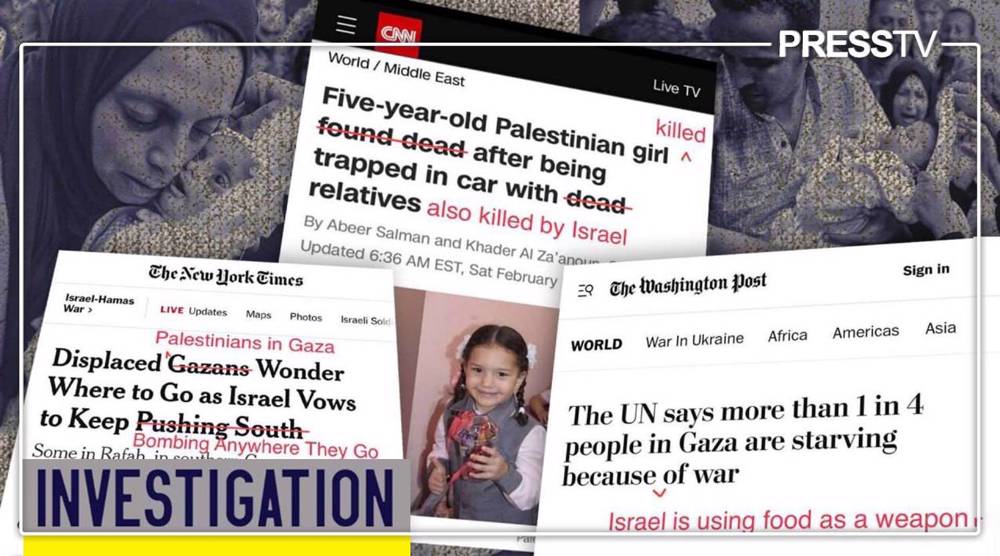

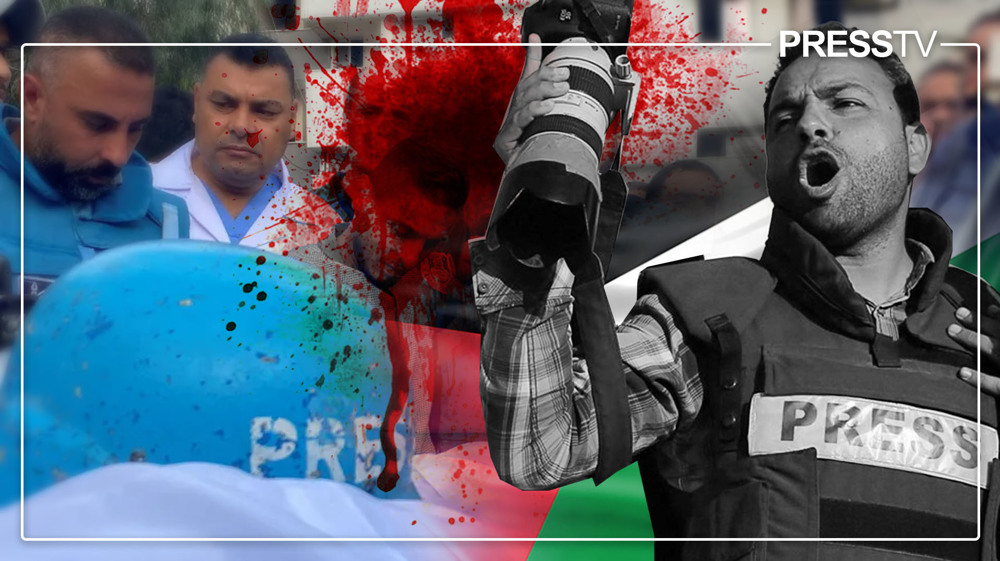

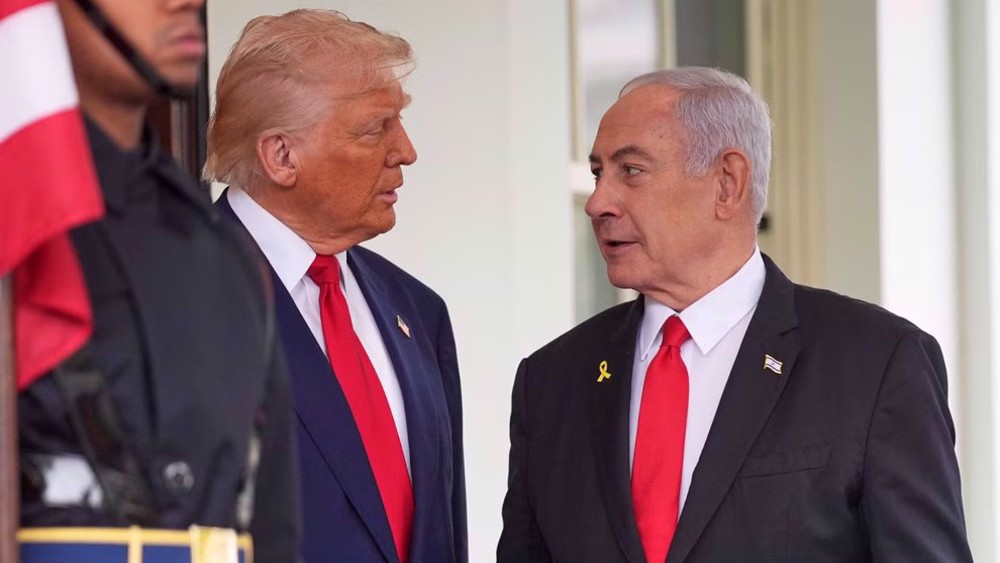
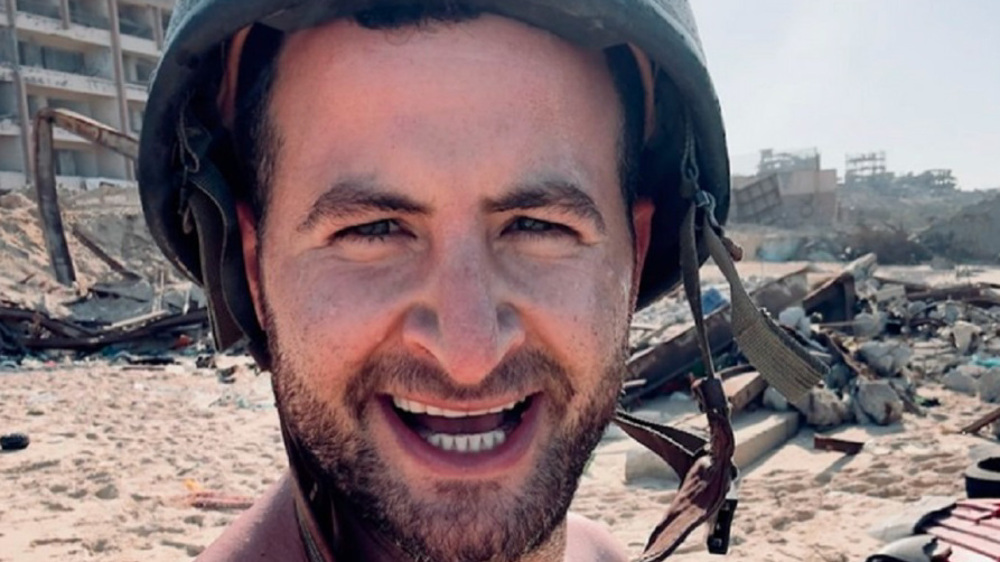



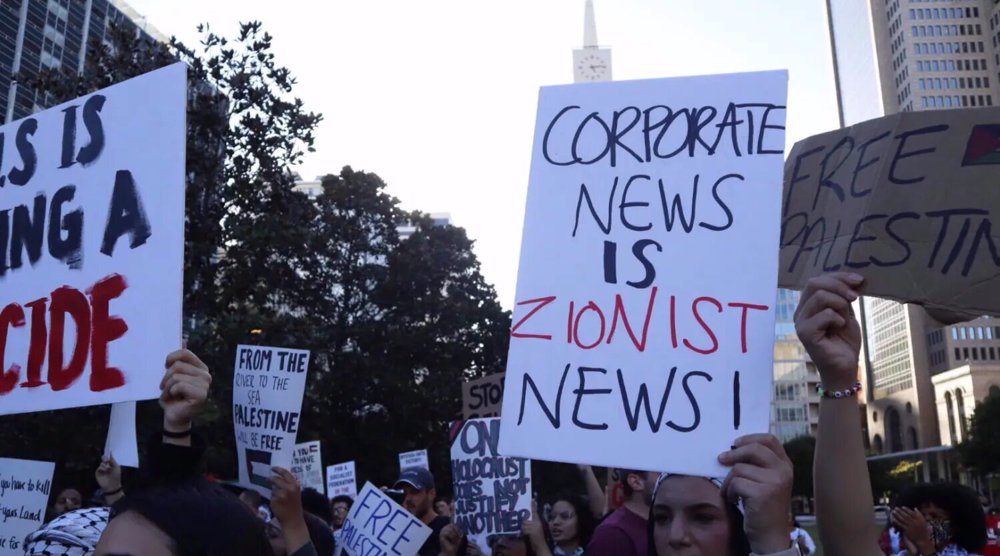

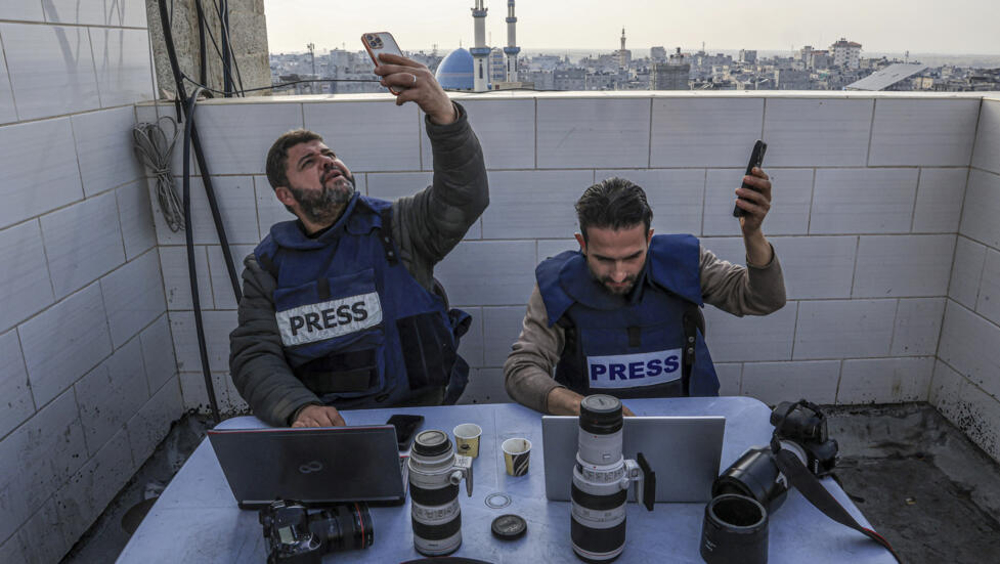
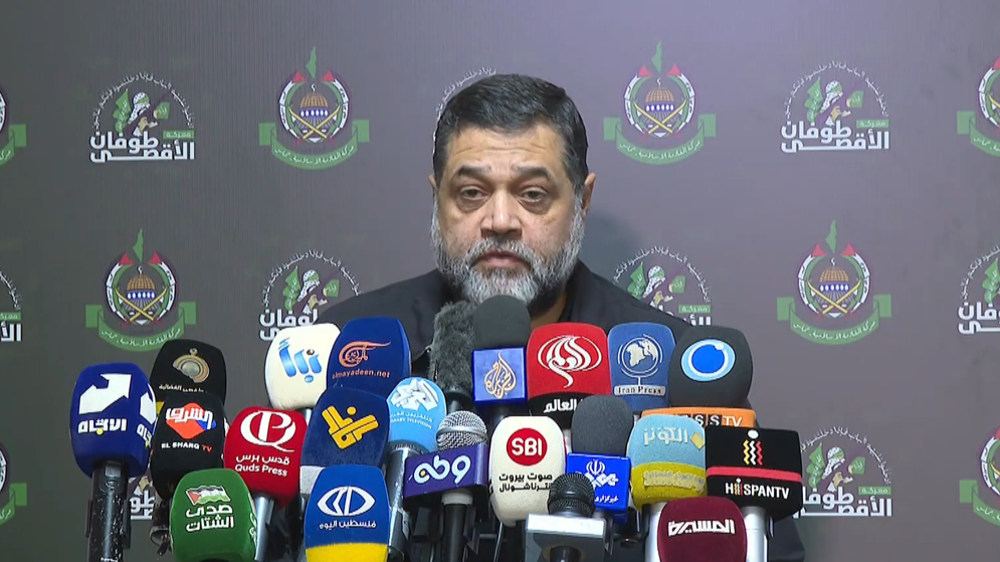


 This makes it easy to access the Press TV website
This makes it easy to access the Press TV website